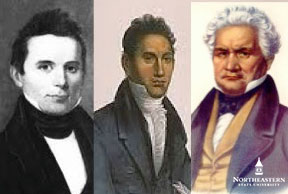
The United States came into existence in its current governmental form with the adoption of the Constitution in 1787. Under the Constitution, the federal government, not the states, was to be involved with the Indian tribes. For the Cherokee, one of the largest tribes in the American southeast, the creation of the United States led to a decade of conflicts with the Americans which set the stage for dramatic changes in Cherokee culture and culminated in the nineteenth century Trail of Tears.
In 1787, militia from the State of Franklin attacked the Cherokee town of Coyatee, Tennessee, burned the council house, and destroyed the Cherokee corn. The militia then went to Chota where they held council with Cherokee leader Corn Tassel, accusing the Cherokee of killing two men. At gunpoint, Corn Tassel and Hanging Man were forced to sign the treaty of Coyatee which surrendered to Franklin all of the Cherokee land north of the Little Tennessee River. There was little concern for the new American Constitution which required legal dealings with Indians to be conducted at the federal level. As a side note, the two men which the Cherokee were accused of killing were actually killed in 1782 in Ohio by non-Cherokee Indians.
Following the forced treaty negotiations with the State of Franklin, the Americans asked a number of Cherokee to attend a council. The Cherokee came to the council under the white flag of truce and some, such as Corn Tassel, flew the American flag at their homes to signify their alliance with the United States. At the council, Corn Tassel, Long Fellow, Abram, and several other national Cherokee leaders were axed to death by the Americans. As a result of this unprovoked attack on their leaders, the Cherokee abandoned their town of Chota and many moved into northwestern Georgia.
Creek leader Alexander McGillivray reacted with anger when he hears of the murders:
“I don’t know what to think of a government that is compelled to wink at such outrages.”
In 1787, a Cherokee war party under the leadership of Bloody Fellow attacked Gillespie’s Fort, Tennessee, killing 28 people, most of them women. The Cherokee left a note telling the Americans that when they left Cherokee land the killing would stop. In addition to Bloody Fellow, Taken Out of the Water, Glass, and John Watts, all war captains, signed the note.
Also in 1787, Dragging Canoe’s Cherokee warriors attacked American troops at the Hiwassee River in Tennessee and obliged them to retreat.
By 1787, it was evident to some Cherokee that peace with the United States was not a possibility and that the Americans, obsessed with greed for Cherokee land, would not rest until the Cherokee people were exterminated. They began to look for a new home outside of the United States. Some Cherokee under the leadership of Toquo asked the Spanish colonial government for permission to settle in Spanish territory west of the Mississippi River. The Spanish government approved the establishment of six Cherokee villages along the Saint Francis River in what is now Arkansas and Missouri. This marked the beginning of the Cherokee migrations west of the Mississippi.
One of the first major pieces of legislation dealing with Indians was the Indian Trade and Intercourse Act which Congress passed in 1790. The Act forbids the private purchase of Indian land; provides for the punishment of non-Indians who commit crimes in Indian country; and licenses those who trade with Indians. Purchase of Indian land must be done at a treaty council held under federal auspices. The Act intended to guarantee fair trading practices with Indians and to establish the integrity of Indian lands by declaring invalid all land acquisitions not sanctioned by the federal government.
In 1791, the Cherokee signed the Treaty of Holston which was intended to end hostilities between the United States and the Cherokee. The treaty gave the United States the exclusive right to trade with the Cherokee and prohibited the Cherokee from entering into diplomatic relations with other foreign powers, individual, or state. Signing the treaty for the Cherokee were Dragging Canoe, Bloody Fellow, Doublehead, Lying Fawn, John Watts, and Little Turkey.
The treaty also called for the United States to advance civilization among the Cherokees by giving them farm tools and technical advice. The United States promised that the land remaining to the Cherokee would be theirs forever.
In addressing Cherokee concerns over settlers, Article VIII gave the Cherokee the power to punish United States citizens who settled on Cherokee lands. The treaty stated:
“If any person, not an Indian, shall settle on any of the Cherokees’ lands, he shall forfeit the protection of the United States, and the Cherokees may punish him.”
Following the signing of the treaty some Cherokee were dissatisfied and in 1792 they sent a delegation to Philadelphia. Six Cherokee chiefs, including Bloody Fellow and Northward, met with President George Washington and with Secretary of War Henry Knox. They complained about the Treaty of Holston and Bloody Fellow recounted the arguments over the Cherokee boundaries and how they had finally given in. He asked that the $1,000 annuity be raised to $1,500 and the Secretary of War signed an agreement to this effect as an additional article to the treaty. Following the meeting, Bloody Fellow was given the new name of Eskaqua (Iskaqua) which means Clear Sky and was designated as a general by the Americans.
The Cherokee at this time, while they recognized linguistic and cultural associations, did not have a central council or government. The Cherokee nation was composed of several loose confederacies of affiliated towns. Among the Cherokee, the towns were loosely affiliated into three groups: (1) the Lower Towns on the headwaters of the Savannah River (including the towns of Keowee and Estatoe), (2) the Middle Towns on the headwaters of the Little Tennessee River (including Etchoe, Stecoe), and (3) the Upper Towns (Overhill and Valley) on the Lower Little Tennessee River and the headwater of the Hiwassee River River (including Settico and Tellico). Under pressure from the American settlers, the various towns began to come together occasionally in council.
In 1792, President George Washington appointed an agent to take up residence among the Cherokee and to provide them with instruction in “civilization.” The agent was to be a liaison between the United States and the Cherokee and to promote American interests among the Cherokee.
In 1792, the Cherokee National Council met at Esanaula. Little Turkey, recognized as the Beloved Man (Principal Chief), presided over the meeting. Hanging Maw spoke as the Beloved Man of the Northern Towns and Badger (Occunna) spoke as the Beloved Man of the Southern Towns. A speech from President George Washington was read to the council. The chiefs were disturbed that American settlers were not being removed. The council opposed American boats traveling freely up and down the Tennessee River.
Armed conflicts and threats of armed conflicts between the Americans and the Cherokee continued in 1792. In Alabama, the Chickamauga Cherokee under the leadership John Watts and Bob Benge formally declared war on the United States and put out a call to all Cherokee warriors. John Watts then read the 600 warriors a letter from the Spanish governor which promised them all of the provisions which they would need for war. Bloody Fellow talked against going to war. The words for peace, however, went unheeded as the warriors painted their faces black and prepared for war against the Americans. The war captains included John Taylor, Tahlonteskee, Glass, Fool Charles, and Breath. The war party was delayed, however, when Whiteman Killer arrived with a canoe load of whiskey.
A mixed group of Cherokee, Creek, and Shawnee warriors attacked Buchanan’s Station, four miles south of Nashville, Tennessee. The Americans repelled the attack and Cherokee war leader John Watts was seriously wounded.
In a message to Congress addressing the problems with the Cherokee and the Creek, President George Washington in 1793 called for the establishment of commerce with the Indians as the solution to the Indian problem. Thomas Jefferson, in a report to President Washington, said:
“The Indians had the full, undivided and independent sovereignty as long as they choose to keep it, and this might be forever.”
The violence between the Cherokee and the Americans continued in 1793. In Kentucky, Cherokee warriors Doublehead, Pumpkin Boy, and Bench ambushed two Americans. After scalping them, the Cherokee then stripped the flesh from their bones, roasted it, and ate it.
An American militia group attacked a camp of friendly Cherokee in Tennessee who were meeting with American agents. Cherokee leader Fool Charles was killed and Hanging Maw was wounded. As a result of the attack, the Cherokee united for a time under the leadership of John Watts. The leader of the militia group was arrested, tried, and acquitted.
In Tennessee, a Cherokee war party under the leadership of John Watts attacked the settlement home of Alexander Cavet, a household of three men and ten women and children. The Americans surrendered as John Watts promised to spare their lives. As they came out, however, Doublehead attacked the Americans with a war ax, killing all except for one boy.
In 1794, a delegation of Cherokee, including Taken Out of Water, Northward, Doublehead, John McLemore, and Arthur Coody, were invited to Philadelphia to reaffirm the Treaty of Holston. Doublehead managed to increase the Cherokee annuity from $1,500 to $5,000.
In 1794, the informal, undeclared, and often deadly war was continued. In Tennessee, an American boat loaded with trade goods was fired upon by the Cherokee as it passed through their territory. In the exchange of fire, two Cherokee were wounded. A war party under the leadership of Whiteman Killer caught up with the boat farther downstream, killing all of the Americans, and capturing the boat’s cargo. In retaliation for the attack on the boat, the American infantry destroyed the Cherokee towns of Nickajack and Running Water. Cherokee leader Breath was killed.
In 1794, the Cherokee met with the Americans at Tellico, Tennessee, to discuss peace. Approximately 40 chiefs signed a treaty of peace. Those signing included Bear at Home, Thick Legs, Broom, Little Turkey, John Watts, Glass, Pathkiller, Stallion, and Tallatuskee. With this treaty a relative peace settled on Cherokee country.
The peace was soon broken: in Alabama, Cherokee warriors under the leadership of Bowl attacked an American settlement on the Tennessee River. The Cherokee council denounced this action and offered to help in the arrest of Bowl. Bowl and his followers crossed the Mississippi and settled in Spanish territory in present-day Missouri.
Nearly a decade after the adoption of the Constitution, in 1796, President George Washington published an open letter to the Cherokee Nation. Washington promised the Cherokee that the federal government would enforce treaties honorably and ensured Cherokee survival as a people and a nation. While Washington, as a man of personal integrity, was undoubtedly sincere in these promises, and his words were accepted by the Cherokee as a sacred vow, the United States would not keep its commitments to the Cherokee.
Tennessee was admitted to statehood in 1796. The new state contained a great deal of Cherokee land, and the new state’s leaders, most of whom were involved with land speculation, put pressure on the federal government to obtain this Cherokee land.
The Cherokee migrations west of the Mississippi River continued as more people attempted to find peace in Spanish territory. The journey west, however, was not without difficulties. In 1796, a group of Lower Town Cherokee loaded their families and supplies into six canoes to move to Missouri. They were, however, attacked by a Chickasaw war party under the leadership of William Colbert.
After a bit more than a decade of dealing with the new United States government, the Cherokee council met at Tellico, Tennessee in 1798 to sign a new treaty which would renew the previous treaties. The new treaty, in response to insatiable American obsession for land, called for new land cessions, and provided for an additional $1,000 in annuities. Signing the treaty for the Cherokee are Bloody Fellow, Little Turkey, Taken Out of Water, Doublehead, and Tahlonteskee.
This was not the last treaty which the Cherokee would sign, nor would it be their last land cession: this first decade of interaction with the newly formed United States simply set the stage for ongoing conflicts, demands for Cherokee cultural extermination, and efforts by the Cherokee to ensure their continuation as a distinct people.
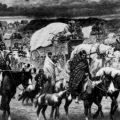
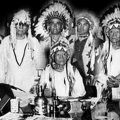
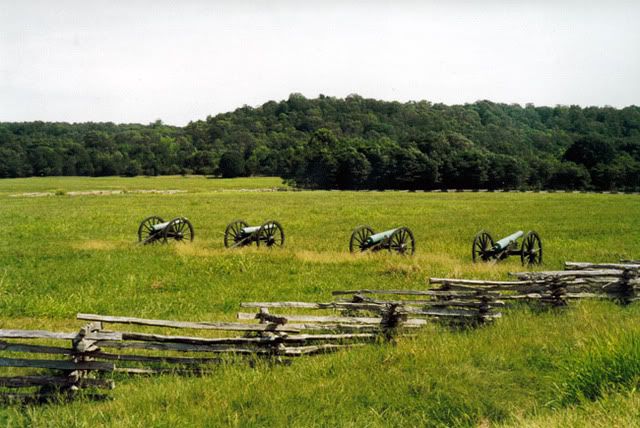
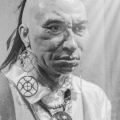
Leave a Reply